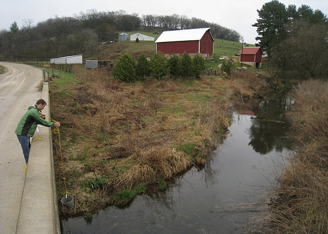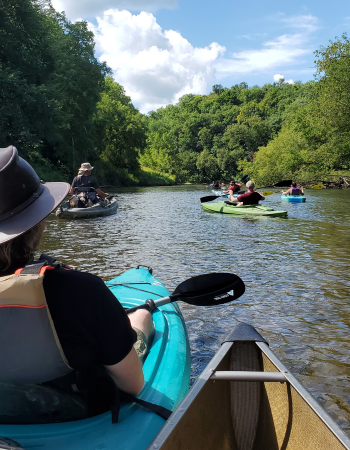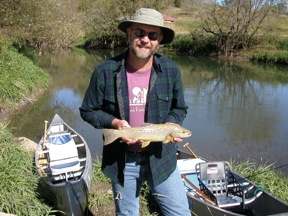Samples have been taken once a month, from April through October, at 3 locations along the main channel of the Upper Iowa River and 27 locations near the mouth of major tributaries. This data provides a snapshot of the entire watershed on a given day each month (e.g., 2nd Tuesday) and allows the comparison of one stream/watershed to the next. Water quality data for the Upper Iowa River Watershed can be found at https://data.upperiowariver.org.
How the Data is Used
Extensive data collection over a wide spatial area of the Upper Iowa and Upper Wapsi Watersheds has allowed for a better understanding of the water quality problems in the watershed without targeting specific points or landowners. Water quality sampling has allowed landowners, citizens, and organizations to find ways to solve the issues related to poor water quality and has resulted in increased funding for effective subwatershed projects, helping to bring in millions of dollars in state and federal cost share to help private landowners implement voluntary conservation practices.
Water quality data can also benefit Soil and Water Conservation Districts and other organizations by providing justification to hire conservation professionals to provide technical assistance to watershed residents.

Water quality data helped RC&D and each respective Watershed Management Authority to develop comprehensive watershed management plans for the Upper Iowa, Upper Wapsi, and Turkey River Watersheds. Data-driven objectives allow conservation professionals to prioritize practices that best address water quality issues in each subwatershed and make watershed improvement more efficient.
For example, if a subwatershed is showing high total phosphorus, we know that soil erosion is likely an issue because phosphorus moves with soil particles. Practices such as prairie strips and field buffers in areas with highly erodible slopes can minimize soil movement from agricultural field areas. While riparian buffers and bank stabilization projects can reduce erosion along stream corridors where legacy phosphorus is tied to sediment.
Monthly water sampling also helps provide a temporal baseline for understanding water quality changes. Change over time is one of the first questions people want to answer with water quality data. More frequent data collection methods such as real-time nitrate sensors or the equivalent paired with flow data are much more effective in determining variables such as change over time or nutrient loading. The Iowa Nutrient Research Center, Iowa Flood Center, and USGS deploy various flow and nutrient monitoring gauges to help further understand nutrient dynamics at the watershed scale.
Why is it important?
It is important for people to understand water quality as it relates to the overall health of a given watershed and how people can positively and negatively impact the health of a watershed.
 In northeast Iowa, healthy watersheds mean ample recreational activities, which in turn drive strong tourism industries. Paddling and floating are popular along the Wapsi, Turkey, and Upper Iowa rivers.
In northeast Iowa, healthy watersheds mean ample recreational activities, which in turn drive strong tourism industries. Paddling and floating are popular along the Wapsi, Turkey, and Upper Iowa rivers.
Tremendous fisheries are present in each river as well. Warm water species such as walleye, smallmouth bass, and northern pike are popular targets. Brook, brown, and rainbow trout inhabit many of the coldwater tributaries to these rivers and provide world-class angling and draw people from all over. All of these opportunities are dependent on good water quality. Trout are very sensitive to warm water temperatures along with many of their preferred food sources. Frequent flooding and sediment laden waters have negative impacts on all species living in northeast Iowa streams and rivers.

As we continue to look for ways to grow sustainably into the future, water quality will be a major factor. Source water protection for growing communities is a necessity. In northeast Iowa, surface and groundwater are closely tied, which emphasizes surface water protection to protect underground aquifers. Long term water quality monitoring is one way to prioritize protection efforts for water quality. Drinking water protection, ecosystem health, and vibrant rural communities are all tied to water quality and RC&D is committed to continued water monitoring into the future to help our rivers be resilient into the future.
About the Author
.png) Ross Evelsizer is the Natural Resource Projects Director at the Northeast Iowa RC&D. In his role, Ross manages landscape resiliency planning for the Turkey, Upper Iowa, and Wapsipinicon watersheds.
Ross Evelsizer is the Natural Resource Projects Director at the Northeast Iowa RC&D. In his role, Ross manages landscape resiliency planning for the Turkey, Upper Iowa, and Wapsipinicon watersheds.
This work helps Northeast Iowa respond to incidents of flooding, water quality concerns, and expanding sustainable agricultural production in the region.